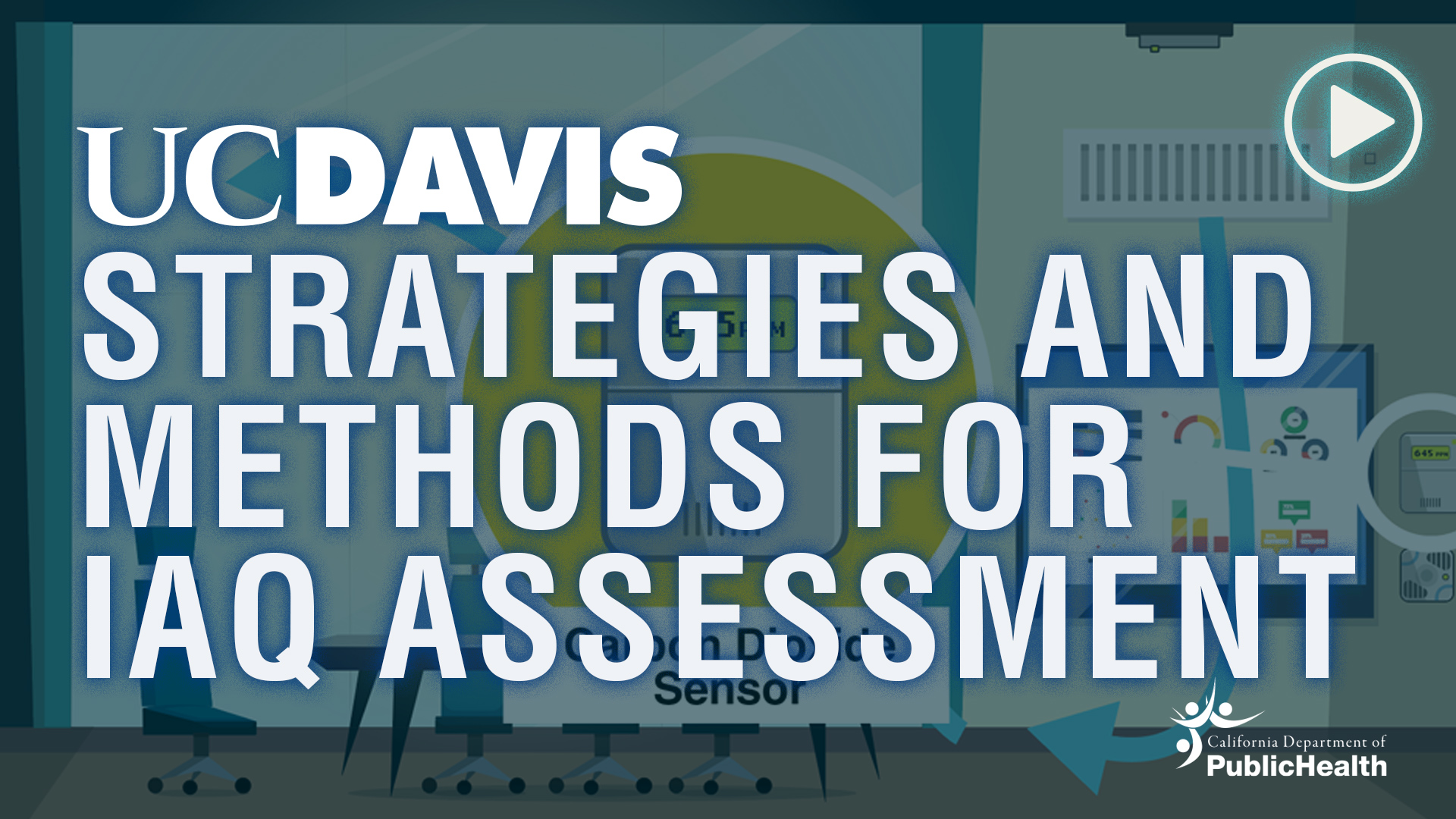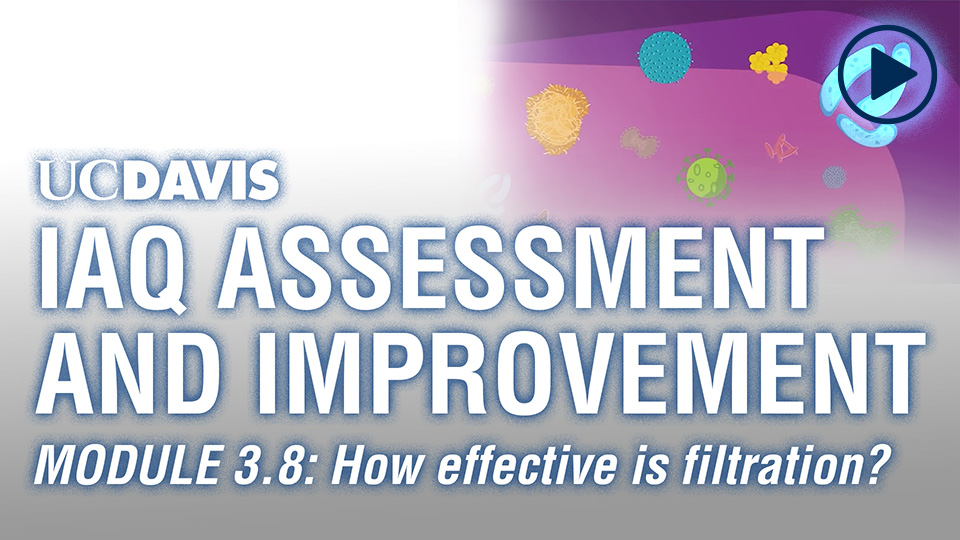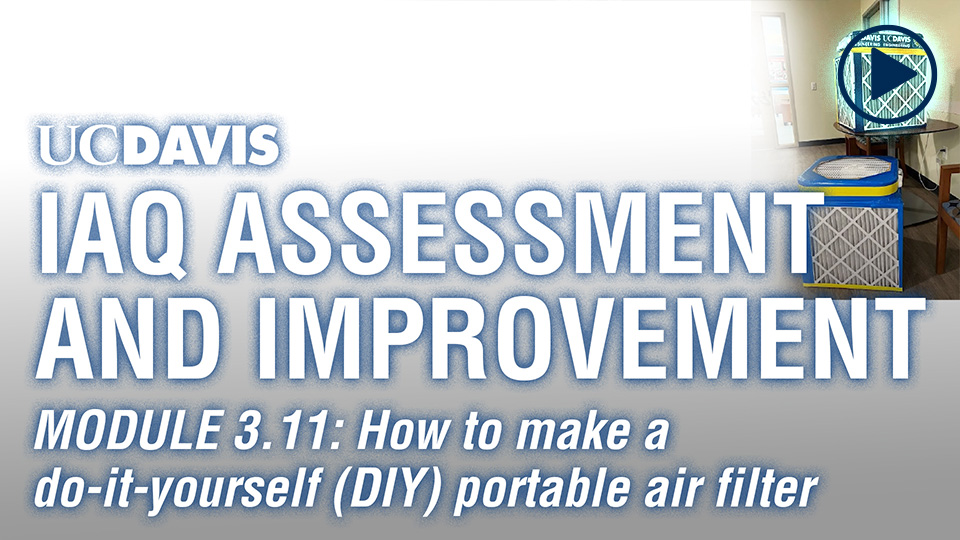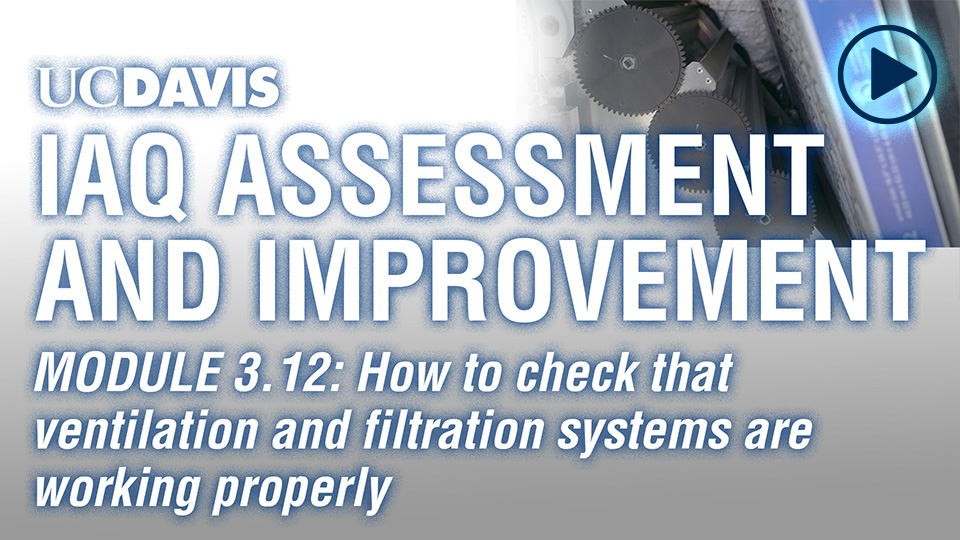Overview Videos

Indoor Air Quality Basics

IAQ and Respiratory Diseases

Strategies and Methods for IAQ Assessment
In-Depth Lesson Videos
Module 1: Indoor Air Quality

1.1: Overview

1.2: What is IAQ?

1.3: Indoor Air Pollutants and Their Sources

1.4: Outdoor to Indoor Transport

1.5: What Happens to Pollutants in the Air

1.6: Understanding Pollutant Concentrations and Units

1.7: Using a Model to Show the Amount of Pollution in a Room
Module 2: IAQ and Infectious Respiratory Disease

2.1: Overview

2.2: What are infectious respiratory diseases?

2.3: How are respiratory diseases transmitted?

2.4: How does the body make respiratory particles?

2.5: How can germs in the air get inside a person?

2.6: How are the risk of disease transmission and indoor air quality related?

2.7: What factors increase the risk of disease transmission indoors?

2.8: Challenge of wildfire smoke and other outdoor pollution
Module 3: IAQ Assessment and Improvement

3.1: Overview

3.2: What is ventilation?

3.3: How do we determine ventilation rates?

3.4: What else determines airflow rates in buildings?

3.5: How is ventilation connected to specific air quality concerns?

3.6: What is filtration?

3.7: What kind of filter should you use?

3.8: How effective is filtration?

3.9: How do portable air cleaners work?

3.10: What should you look for when purchasing a portable air cleaner?

3.11: How to make a do-it-yourself (DIY) portable air filter

3.12: How to check that ventilation and filtration systems are working properly


